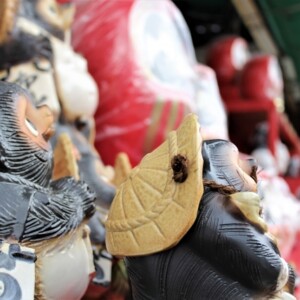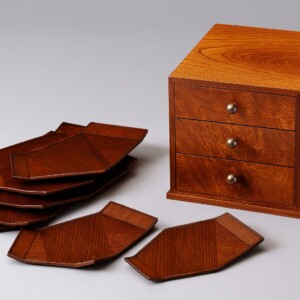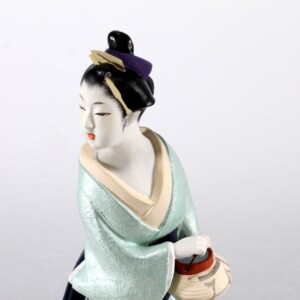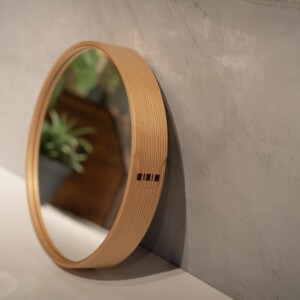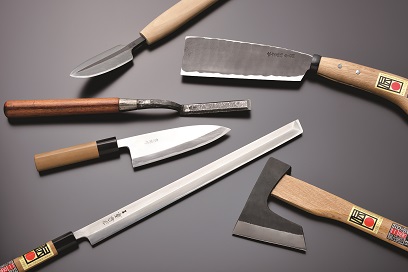
What is the appeal of Echigo Sanjo Uchihamono? Explanation based on its features and history!
Japanese cutlery is attracting attention from abroad for its sharpness, durability, and ease of use.
Among them, Sakai City in Osaka Prefecture, Seki City in Gifu Prefecture, and Sanjo City in Niigata Prefecture are known as the three major cutlery production centers in Japan.
Of these, cutlery produced in Sanjo City, Niigata Prefecture, is known as “Echigo-Sanjo Uchihamono” and is widely distributed.
In this issue, we will explain the appeal of Echigo-Sanjo Uchihamono based on its characteristics and history.
What are Echigo Sanjo Uchihamono?
Echigo-Sanjo Uchihamono is a craft produced in Sanjo City, Niigata Prefecture.
Uchihamono” are blades made by heating soft iron in a furnace and hammering with a hammer.
Unlike “Nukiwa-mono,” which are made using metal molds, hammered blades are basically formed by hammering and forging one by one using katagami-moto, a process that requires advanced techniques.
In postwar Japan, mass-produced blades became widely available, but Echigo-Sanjo cutlery is distinctly different from these, and its valuable techniques are still carefully passed down by skilled craftsmen today.
Features of Echigo-Sanjo Uchihamono
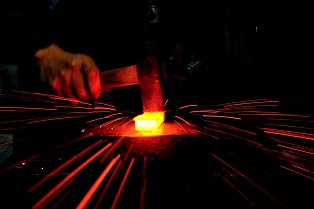
Echigo Sanjo Uchihamono has the following two main features.
Each feature is explained below.
Advanced forging technology
An indispensable point in describing Echigo Sanjo hammered cutlery is that it is made using advanced forging technology.
Forging technology refers to the repeated process of beating hot metal with a hammer to shape it, cooling it, and hardening it.
This process eliminates gaps in the metal, making the blade stronger and more resistant to wear.
It takes many years to master the forging technique, and skilled craftsmanship is required to produce high-quality blades.
Wide Variety of Variations
Echizen Sanjo Uchihamono has its roots in the technique of making agricultural tools.
The sickle and hoe, which are indispensable for agriculture, were developed from these cutlery tools, and the use of shapes and materials that match the field of use is a major characteristic of Echizen Sanjo cutlery.
These innovations have made it possible to manufacture blades that are easy to use and highly durable.
Manual work by staff
The important process of making Echigo Sanjo hammered cutlery is carefully carried out by the hands of skilled craftsmen.
This is to make delicate adjustments that can be said to be microscopic, and is an important point that leads to a finished product that cannot be made by machines.
The finish of Echigo Sanjo hammered cutlery differs from craftsman to craftsman, and the individuality of each cutlery can also be said to be a characteristic of Echigo Sanjo hammered cutlery.
History of Echigo Sanjo Uchihamono
Echigo Sanjo Uchihamono is a traditional craft with a long history.
The following section will unravel the history of Echigo-Sanjo Uchihamono.
The Beginning of Echigo Sanjo Uchihamono
At the beginning of the Edo period (1603-1867), the Echigo region was repeatedly flooded by rivers, and farmers were forced to live in poverty.
Seibei Oyama, who was serving as a deputy of Sanjo Castle at the time, promoted the production of Japanese nails as a side business to help the farmers recover from their situation.
Some of the farmers learned the nail-making process from craftsmen invited from Edo, and some of them devoted themselves to nail-making.
The nail-making techniques were also utilized in the production of sickles and hoes, which were indispensable for farming.
At the same time, new rice paddies were being developed in the Echigo region in order to increase the amount of stone, and the demand for farming tools also increased.
Thus, Echigo Sanjo hammered cutlery became established as a technique for making agricultural tools.
Development through the Formation of a Blacksmith Town
In response to the growing demand for agricultural tools, craftsmen who made their living in the Echigo region gathered in the current Sanjo area to form the “Kajimachi” area.
It is said that during the Kanbun period (1661-1673), there were about 20 households that specialized in forging, indicating that the cutlery industry had taken root in the Sanjo City area.
Since then, agricultural tools made by Sanjo blacksmiths have been distributed to various regions utilizing the water transportation of the Shinano River.
With the gradual development of commerce that accompanied this, production of products other than agricultural tools also began, and “Echigo Sanjo percussion cutlery” became widely recognized.
Modern Echigo Sanjo Uchihamono
In April 2009, Echigo Sanjo Uchihamono was designated as a traditional Japanese craft by the Minister of Economy, Trade and Industry.
The 10 items designated at that time included kitchen knives, cutlery knives, hatchets, sickles, and chisels, as well as the Japanese nails that inspired the creation of Echigo-Sanjo Uchihamono.
Even today, more than 400 years after production began, Echigo Sanjo Uchihamono is still a cutlery that attracts attention not only from Japan but from around the world.
In addition to being a beautiful craft, they are also highly regarded for their quality and sharpness by craftsmen working in the field.
How to care for Echigo-Sanjo Uchihamono
Echigo-Sanjo Uchihamono is a craft that is valued by ordinary households.
In order to use these highly skilled cutlery for a long time, care must be taken to maintain them.
For example, if you feel that the sharpness of the blade has deteriorated, sharpen it carefully with a whetstone.
Instead of performing maintenance after the blade has completely lost its sharpness, you can prolong its life by preparing it on a regular basis.
Conclusion
Echigo-Sanjo Uchihamono, the pride of Sanjo City, Niigata Prefecture, is a craft that originated in the making of Japanese nails.
The high level of manufacturing technology has been passed down to the present, and high quality products continue to be produced even today.
Not only kitchen knives, but also sickles and hoes useful for farming are popular items of Echigo Sanjo Uchihamono.
Although mass production has become the mainstream in recent years, why not enjoy the skill and attention to detail of these skilled craftsmen?




